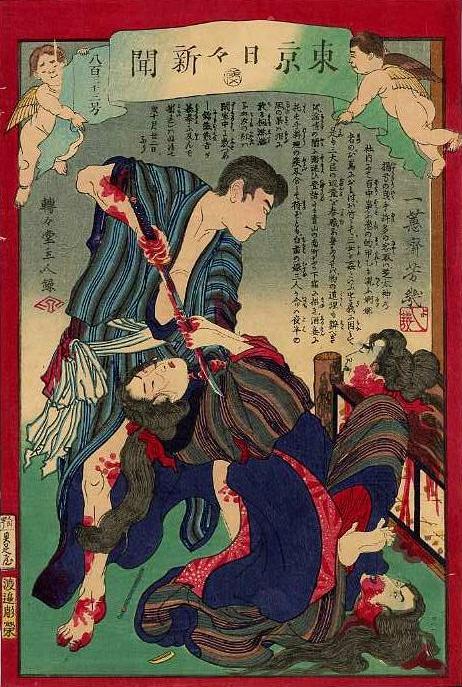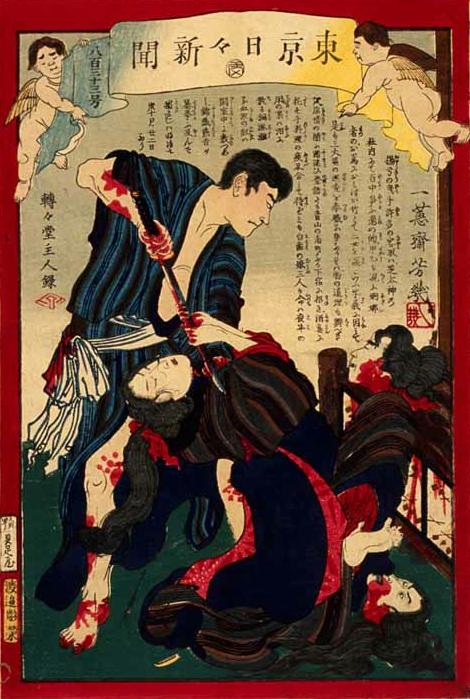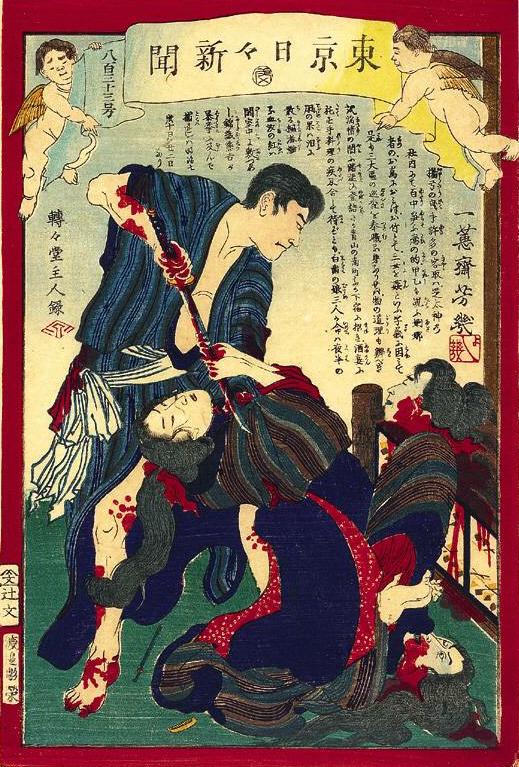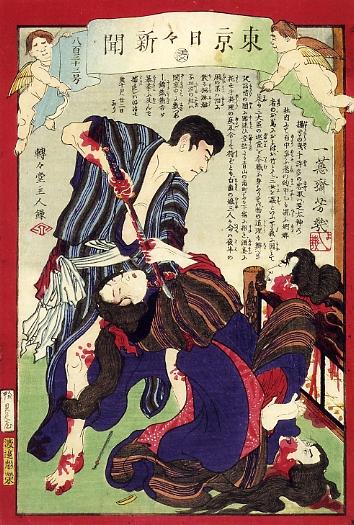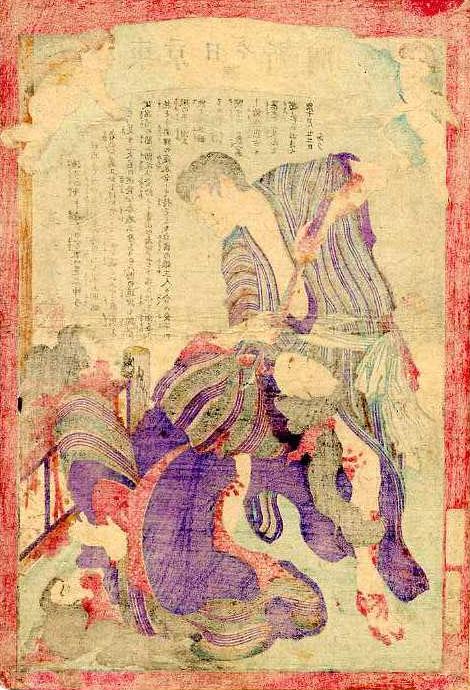CommentarySupposidly the women were so crazed with jealously they implored Nishikiori to die with them. According to the newspaper article on which this story was based (Tonichi, Issue 833, 24 October 1874, transcribed in Tsuchiya 2000), Nishikiori lopped off the heads of Omitsu and Oshima and slashed Otake to death. He fled, but was spotted trying to throw himself in a well on the property of a Mr. Ono in Kōgaimachi (Azabu), and arrested. Apparently Tonichi later reported (Issue 911, 19 January 1875) a rumor that the three women had been seen earlier in January 1875 at Kanda Myōjin (Chiba 2008, page 39). Kanagaki Robun (1829-1894) is supposed to have written an article on this incident in Kanayomi shinbun (Sato Kenji, in Kinoshita and Yoshimi 1999, page 210). It was also featured in Osaka nishikiga nichinichi shinbunshi No. 30 (image on right), and become the theme of plays in both Osaka and Kyoto (Newspark 2001, page 43). SandaikuThe newspaper article identifies Sandaiku (三大区) as Dai-sandaiku-hachishoku (第三大区八小区) -- literally "3rd large district, 8th small district". A "large district, small district" system was established in 1872 to refine the "district" system set up in 1871 to facilitate household registration. Within each "large district" were several "small districts" consisting of small towns and villages. These administrative units continued until 1878, when the county, ward, town, and village (郡区町村) system was established. Shiba DaijinThe nishikie story has Shiba Daijin (芝太神), while the newspaper account has Shiba Shinmei (芝神明). Both refer to an area that surrounded what is now called Shiba Daijingū (芝大神宮) in Minato ward. During the Edo period, the area was a popular gathering point, about midway between the start of the Tokaido road at Nihonbashi and the first station at Shinagawa. |
